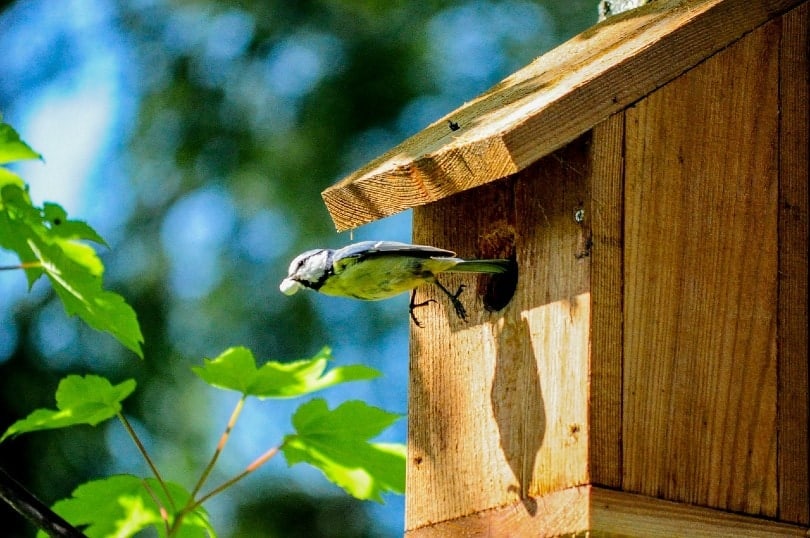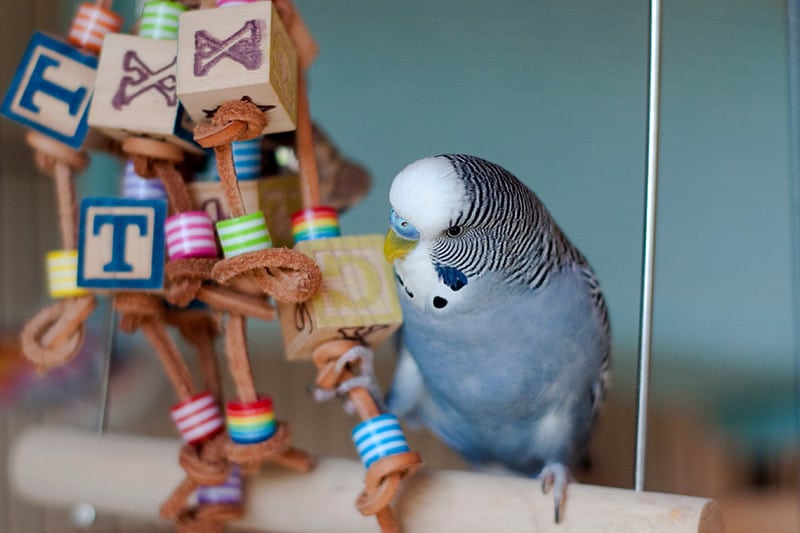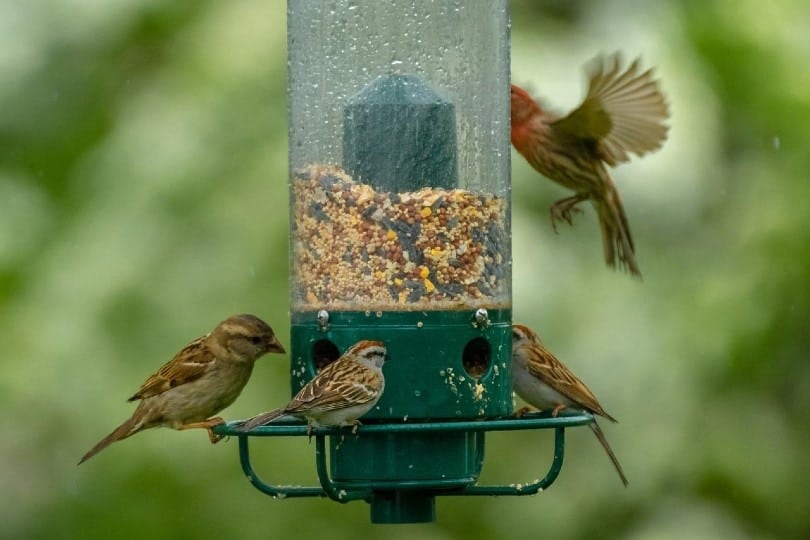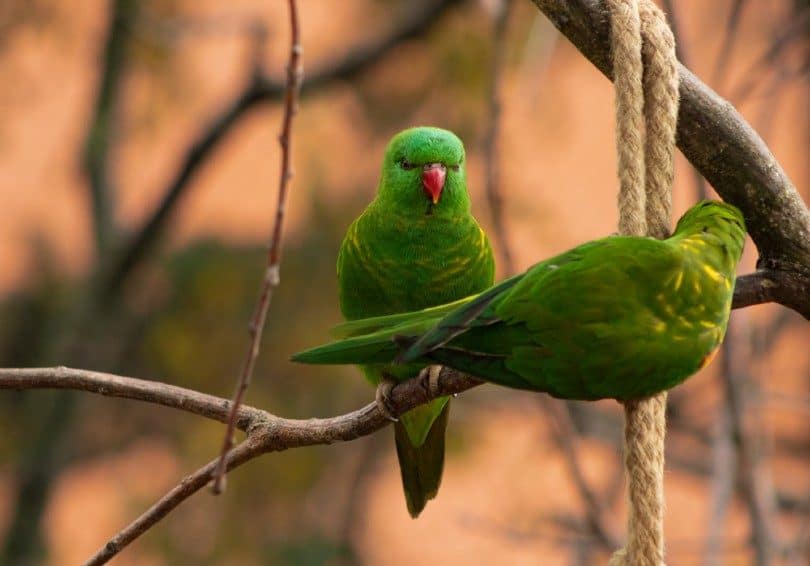There are lots of different types of birds, and all sorts can make wonderful pets. Many birds enjoy close contact, which makes many of them nice, social and sometimes cuddly friends. Some just love to talk or sing to you, giving you friendship and relaxation. A lot of parrots will enjoy sharing meals with you, napping with you, and even showering with you. Pet birds love to interact with their human companions.
In spite of their attractive appearance and good nature, learning how to take care of a pet bird does take a little bit of work and some common sense.
Bird care starts with the same basic approach for all types of birds. They all need a bird cage with one or more perches, and bird feeders to accommodate their appropriate food and/or bird seed. Bird care however, can be a trickier business than caring for other types of domestic pets. Why? Because different types of birds have unique needs. Bird care needs to be tailored to each type of pet bird for its health and well-being.
This bird guide covers the things you need to know about how to take care of a pet bird from bird supplies and food, to exercise, safety and bird health care. Pet bird care is simple and enjoyable if you have the right type of bird. Make sure to choose a bird that fits your personality and lifestyle. Then learn all you can about the type of bird you are getting and its needs. Providing the right care will ensure a long, happy life for your pet bird, and tons of enjoyment for you.
- To find the right bird for you, see: Choosing A Pet Bird, What is the right bird for me?
Bird Houses
Bird care starts with housing for your bird. Birds need a good environment that provides a place to rest as well as places to play and exercise. Primary birdhouses can be bird cages or an aviary.
There are several options when thinking about the types of birdhouses for your pet. You can provide a very large bird cage or a smaller cage along with a play area outside of the cage, often utilizing a playpen. You can also provide a flight cage for regular exercise or have an aviary. Aviaries can be either an outside aviary or and indoor aviary. Indoor aviaries can even be a ‘bird room’ type.
Factors for deciding how to house your bird include what your living space affords along with meeting the specific needs of your particular bird.
- Bird Cages
All birds should be housed in a cage that is as roomy as possible, this is especially important for birds that will spend most or all of their time in the cage.
Cage Specifications- Birds need to be able to stretch their wings and flap them without hitting anything. They should also be able to make short flights, hop around and play with bird toys.
- Birds that live exclusively in a cage will need a space of three times their wing span as an absolute minimum, with more space being better.
- Horizontal bars on the sides of bird cages are very important for birds that like to climb, such as parakeets, cockatiels and lots of playful parrots.
- The bar spacing needs to be small enough that the bird cannot get its head through them.
- Metal bars are good for birds that like to chew.
- It is really nice if the cage is easy to clean. Many bird cages have a slide-out tray and an easily removable grate.
- Outside the cage you can provide a playpen along with safe bird toys.
- Bird cages should be placed in a draft-free area that is well lit, but not in direct sunlight.
- To make your birds feel secure and comfortable keep their cage against a wall or in a corner.
- Place your bird’s cage so that it is at eye-level or lower for good social interaction. You don’t want your bird above your head because for them, being up higher means they are dominant.
- You don’t want to place your bird in the kitchen or in a room that is too near to the kitchen. Birds are highly susceptible to airborne fumes and toxins. A small amount of smoke or the vapors from Teflon cookware could kill your bird.
- Aviary
Aviaries are beneficial because they provide large areas for birds, often with the intent of breeding. Aviaries can be either indoors or outdoors. Some birds are very noisy and can be a nuisance to close neighbors. So if your birds are loud, you may want to keep them in an indoor aviary or in a remote area.
Indoor Aviaries- Indoor aviaries give you the ability to control temperature, lighting, noise and humidity.
- An indoor aviary is often a room in a home devoted to birds.
- The windows are covered with wire and the door often has a wired porch with two doors to pass through . These are to keep your birds from flying out.
- Some indoor aviaries are simply a bird room with extra large cages. Doing it this way, the doors and windows don’t need to be screened in.
- Outdoor aviaries can provide your birds with a natural environment and are designed in a wide variety of styles.
- Because the birds kept in outdoor aviaries are exposed to the weather, they must also have indoor sheltering, possibly heated or cooled if conditions get extreme.
- Outdoor aviaries always need a shaded area and wind breaks.
- Trees or large branches can fit in nicely to create a comfortable home, but must be of non-toxic woods.
To learn about different bird species, see: Bird Information: About the Types of Birds

Bird Supplies
- Bird Feeders
Bowls are needed for foods and treats, water, grit and crushed shell. Small birds can use plastic bowls. Ceramic or stainless steel bowls generally are needed for medium and large parrots. These bigger birds will often chew up plastic bowls, or even pick up their bowls and dump them or toss them to the floor. Built in bowl holders are often a part of the cage and may be designed to keep the bird from removing the bowl. Other bowls are attached with hooks, bolts or clips, and may mount inside or outside the cage depending on the design. - Bird Perches
Perches not only provide standing places for birds, but also give them an opportunity to exercise their beaks and keep their beaks trim. Perch size and shape can vary depending on the bird, but should fit their feet. A 1″ perch is comfortable for most parrots and a 1/2″ perch suits smaller birds.
Round and oval wooden perches are often used, and sometimes plastic perches are used for small birds. Variety in both size and shape is important to exercise your birds feet. Natural branches are great for providing this variety. Concrete perches make nice additional perches for parrots to help them keep both nails and beak trim. - Bird Toys
Bird toys are a great way to combat boredom and provide exercise for your pet bird. Toys for birds are designed in lots of combinations of woods, leathers, ropes, chains, bells and even acrylics. Toys such as swings and ladders are designed for chewing and climbing, while stainless steel mirrors are for viewing and comfort. The wide range of non-toxic colors, fun textures, shapes and sizes, sounds (and even smells) that you’ll find in bird toys will keep both you and your bird interested in checking out new ones.
Bird Exercise
Exercise and activities are extremely important to keep your pet bird healthy and happy. Birds are inquisitive, social, and they like to play. Exercise is natural for them and easy to provide.
- Short Flights
A bird’s cage needs to accommodate their full wingspan so they can safely flap their wings and exercise them. If they are kept in the cage all the time, they need to be able to make short flights. A cage should be at least three times their wingspan if they are kept caged all the time. Small birds, like finches and canaries, primarily flutter from perch to perch and make short flights. They are generally always kept in their cage or aviary and can be difficult to catch if they get out. - Climbing
Parrots of all sorts love to climb on ladders and the horizontal bars of their cage. Some like to hang from the top of their cage or from various toys and swings hanging in the cage. Many of the smaller parrots like swings. . Natural perches not only provide exercise for the parrots toe muscles, they also keep birds gnawing on the bark and the wood. Cuttlebones are good for beak trimming as well as a calcium supplement. - Bird Toys
Toys provide entertainment as well as exercise and most parrots like to chew. Perches, swings, ladders and toys all become objects of entertainment and chewing.
Plastic toys are only safe for small birds. Small birds and parakeets are fine with plastic toys, and perhaps less active cockatiels. Larger parrots will destroy them and can be injured by the chewed pieces.
Various woods, leathers, rawhides and acrylic make good chew toys for all parrots. Bells are a favorite toy and reflective surfaces, like stainless steel mirrors, can be enjoyed by some birds. - Playpen
The playpen is a play areas located outside the cage. They have a variety of perches, ladders and swings that give birds a place to exercise and play. Playpens usually have food and water dishes which allows you to leave your bird out for as long as you’d like. - Bird Baths
Most birds love a bath! A bath placed in the bottom of the cage or mounted through a side door will allow small birds to bathe, and they can create quite a splash. Often birds will take a bath in the fresh water of their water dish if not provided with a bath!
Larger birds usually like a light misting from a spray bottle 2 or 3 times a week. Birds anticipating a bath will often spread their wings out to catch the mist and call loudly when being sprayed. Hand-tamed birds often prefer to shower with their owners.

Bird Safety
Keep your bird safe! It is up to you. It is very important that you know how to take care of a pet bird to keep your bird safe. Some of the most familiar hazards can be avoided with a little common sense and by paying attention.
- Avoid accidents
Be cautious when you take your pet is out of its cage, be sure it is safe.
If you bird flies out an opened window or door, you may never see it again!- Don’t leave windows and doors open.
- Don’t have any water-filled vessels lying around, or toilet lid up.
- Make sure the stove isn’t hot.
- Make sure the ceiling fan isn’t running.
- Physical Harm
Avoid physical harm to your pet bird. Don’t ever hit your bird and don’t let anyone else hit your bird. - Watch for toxic plants
Watch what your pet bird chews on outside its cage. Don’t let your bird eat any toxic plants like oleanders, azaleas, juniper, daffodils, philodendron, lily-of-the-valley, etc. - Avoid toxic substances
Some important pet bird information to know includes substances that may be toxic to your bird. Do not leave any of these substances sitting out and put away any rags or dust clothes that you used to clean with.- It is very important to make sure that your bird’s cage is painted with lead-free paint.
- Make sure your curtain rods are also lead-free if you allow your bird to fly about the house.
- Tap water delivered in lead pipes can have a toxic affect on your bird.
- Signs of poisoning can include vomiting, seizures, diarrhea and lethargy.
- Poisons
Some common household poisons to avoid include:- Antifreeze
- Any household pest you eliminate with poisons also becomes toxic to your bird
- Alcohol
- Ammonia
- Detergents containing boric acid
- Drain cleaners
- Various types of fuel including gas, oil and kerosene
- Furniture and metal polish
- Gasoline
- Hair dye
- Laundry bleach
- Mushrooms
- Nail Polish
- Oven Cleaners
- Paint and paint thinner
- Pesticides
- Pine oil poisons (rat, snail, roach bait)
- Rust remover
- Shaving lotion
- Spot removers
- Super Glue
- Toilet bowl cleaner that hangs exposed inside the toilet bowl
- Various types of bathroom cleaners
- Varnish
Bird Foods
Birds need good nutrition, a diet that is designed for them and has the necessary components for a balance diet. A healthy diet for most types of birds can include a wide variety of grains, bird seed, fruits and green vegetables. Use additional supplements to add minerals and proteins to their diet. Also provide plenty of daily water.
There are many types of food available for all the different types of pet birds. Most packaged bird food will specify the type of bird it was designed for, and have the necessary components for a balance diet. They are usually sold in small packages from 1 to 5 pounds, and some are available in large quantities of 25 or 50 pound bags.
Many individual types of bird seed, like canary seed or safflower seed, can also be purchased by the package. Popular bird foods are often available in bulk (serve yourself) as well. You can purchase bird food at pet stores, hardware stores, often in grocery stores, and through on-line bird pet supplies. There are pros and cons to feeding either a formulated diet only or a seed diet only. But supplements can be used to enrich all types of diets.
Foods available for birds include:
- Bird feed mixes – Bird feed mixtures can include formulated foods, bird seed, nuts and dried fruits.
There are specific mixes for each type of bird. They will consist of a mixture of seeds, formulated foods, some supplements, and usually additional vitamins. Bird mixes are generally regarded as suitable especially when provided with additional supplements. - Formulated diets – pelleted or extruded manufactured food
Formulated diets provide a good nutritional base, containing all the necessary minerals and vitamins, so additional vitamins are not required. However, formulated diets do not contain the phytonutrients (antioxidant pigments) that are found in vegetables, fruits, grains, and seeds. Phytonutrients are believed to boost the immune system, help a body to heal itself, and to prevent some diseases. Many birds also become bored with a formulated diet due to the lack of variety. Offering supplements can help provide the phytonutrients and help offset boredom. - Bird seed diets – mixes of bird seed
Seed only diets offer much more variety but requires additional vitamin and calcium supplements. In the wild many birds eat seed as a major portion of their diet. Many birds need not only nutritional requirements met but also variety for psychological enrichment. All seeds contain protein and are roughly divided into either a cereal type seed such as millet, or an oil type seed such as sunflower seed. To provide a balanced diet, minerals, amino acid, vitamins and trace elements can be added as a supplement to seed or water.

Bird Supplements
Provide supplements in addition to any of the above diets. Be careful not to feed things that can be toxic or bad for them, such as avocado, chocolate, or caffeine.
- Vegetables, Greens, and Fruits
These include soaked and sprouted seed and even some green plants (make sure they are non-toxic). All types of fruits are a good supplement such as apples, pears, plums, cherries, grapes, oranges, bananas, mangos, papayas, and even berries such as strawberries and blueberries. Vegetables are also good supplements such as carrots, cucumbers, zucchini, many garden vegetables, and even dandelions and chickweed. Do not feed avocado as it may be toxic to birds! - Protein Supplements:
Additional proteins can be offered to some birds about every 1 1/2 weeks such as cottage cheese, hard boiled eggs, and even canned dog food. Many birds will eat what you eat. Be sure anything you offer is not toxic to your bird. Most foods are okay but there are a few, like avocado, that can poison birds. - Mineral Supplements:
Cuttlebone and calcium blocks will also provide necessary minerals for maintaining your birds health. Finely ground shells, such as oyster shell, and other natural minerals can be added to regular grit. - Bird Grit
Grit is an aid to digestion for birds that eat seeds unshelled. Grit also contains valuable minerals and trace elements, and though not necessary for digestion will aid some birds if offered in limited amounts.
Birds That Need Grit- Some seed eating birds need grit.
- This applies especially to birds such as pigeons and doves that eat their seed whole without shelling it first.
- It is an essential to aid in digestion to seeds eaten unshelled as these birds use it in their crop to grind the seed.
- Birds that are not primarily seed eaters, like soft bill birds, do not require grit or cuttlebone.
- Mynah’s and Toucan’s are types of pet birds that will eat softbill food.
- Lories and Lorikeets primarily eat pollens and nectars, though they may also eat some seed.
- These types of birds major diet consists of fruits like apples, bananas, pears, and grapes. They also will eat soaked dried fruits, canned fruits and natural juices. All of these are easy to supply.
- There are also commercially prepared pellets and powders available.
Featured Image Credit: Martin Kominko, Shutterstock
